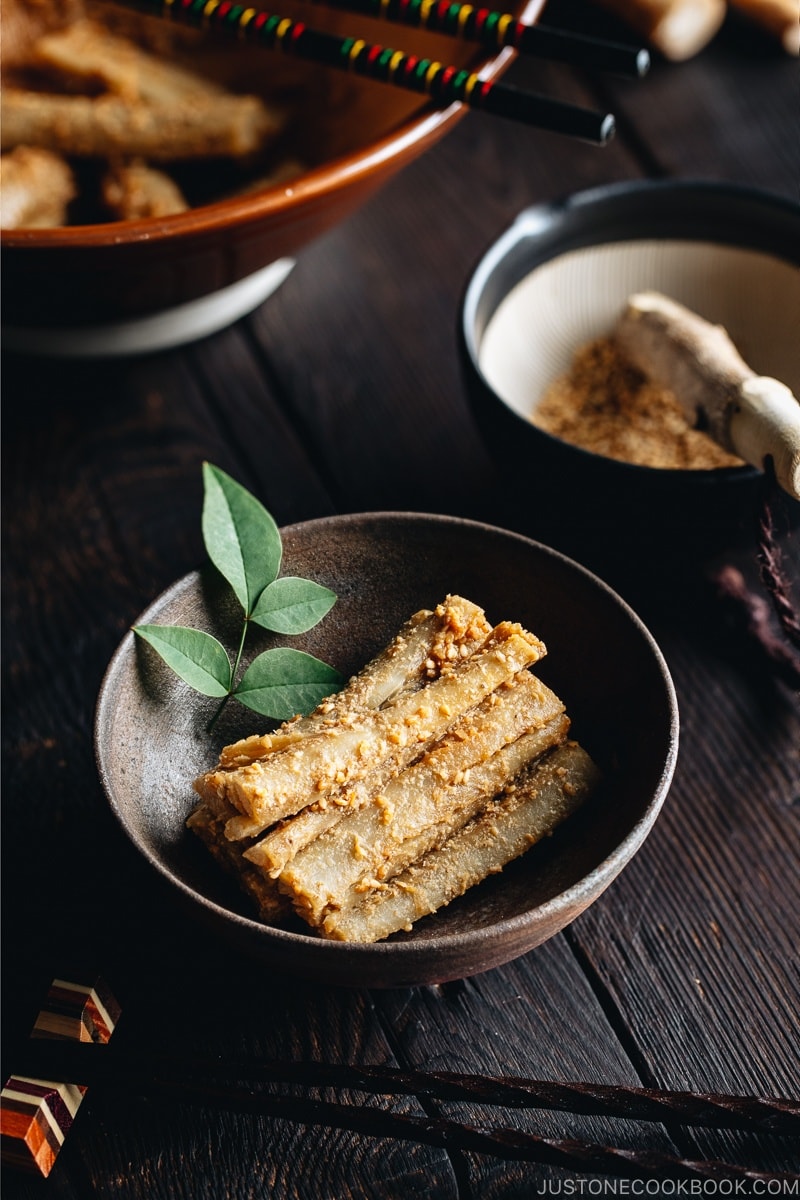
We eat burdock root (gobo, ごぼう) all year round in Tonjiru miso soup, Kinpira Gobo, and Gobo Salad. On New Year’s Day (Oshogatsu), we serve this earthy and nutty Pounded Burdock Root with Sesame Sauce or Tataki Gobo (たたきごぼう) in the Japanese New Year feast called Osechi.
What is Gobo?
Gobo is the Japanese name for burdock root. Originating from the Siberian region of Northern Asia and in use as a vegetable in Europe during the Middle Ages, it is particularly popular in Japanese cuisine and Chinese herbal medicine.
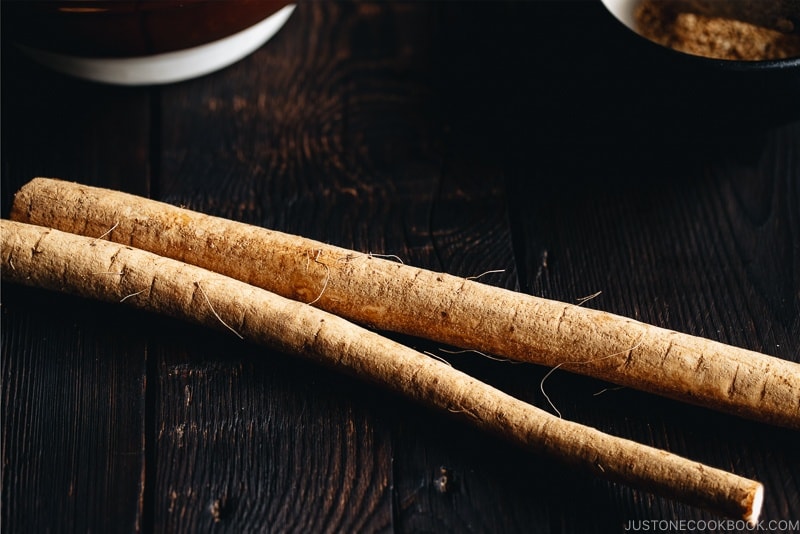
The root is sweet, mild, and earthy with a taste similar to artichoke, and most of the flavor comes from right below the skin. Therefore, instead of peeling the skin, we “shave off” the thin layer of skin with the back of a knife.
It is one of my favorite root vegetables along with lotus root. In Japanese cooking, gobo is used in soups, simmered dishes, rice dishes, salad, and deep-fried dishes.
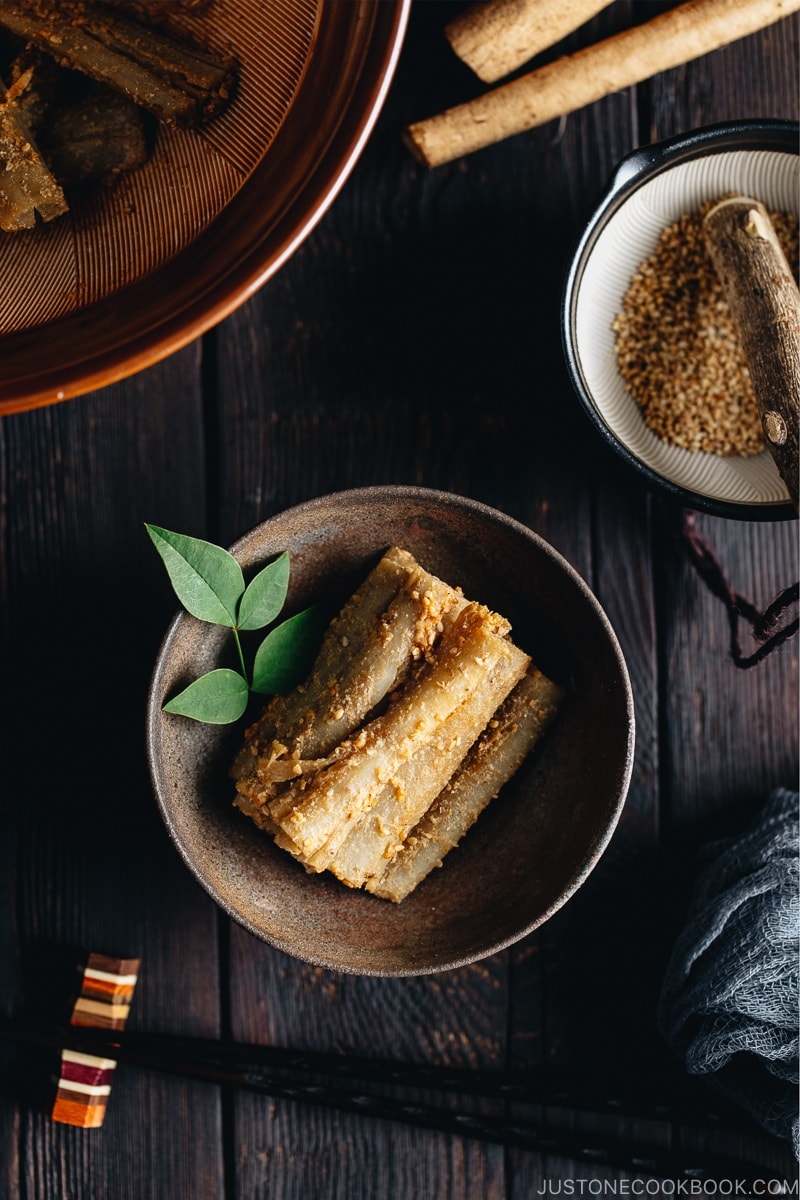
Eat Pounded Burdock Root (Tataki Gobo) on New Year’s Day
Burdock root or gobo is a deep root that grows straight down into the ground which symbolizes stability for the house and family. Therefore, it’s considered one of the auspicious foods eaten during the Japanese New Year.
Tataki Gobo is a traditional Japanese New Year’s dish where burdock root is cooked, pounded, and dressed with sesame sauce. It is one of the top 3 dishes for the New Year in the Kansai region (Osaka area), but not as popular in the Kanto region (Tokyo area).
Why do we need to pound the burdock root? The burdock root is pretty tough and fibrous, even after cooking. Therefore, we smash the root and break down fibers, which allows the sauce to go through the fibers of the burdock root. Pounding also makes the root easier to chew, even for children!
Burdock root is known for its many health benefits, such as multiple types of powerful antioxidants. Not only for the New Year’s celebration, but we should also enjoy this root vegetable all year round, especially when it’s in season from fall to winter.
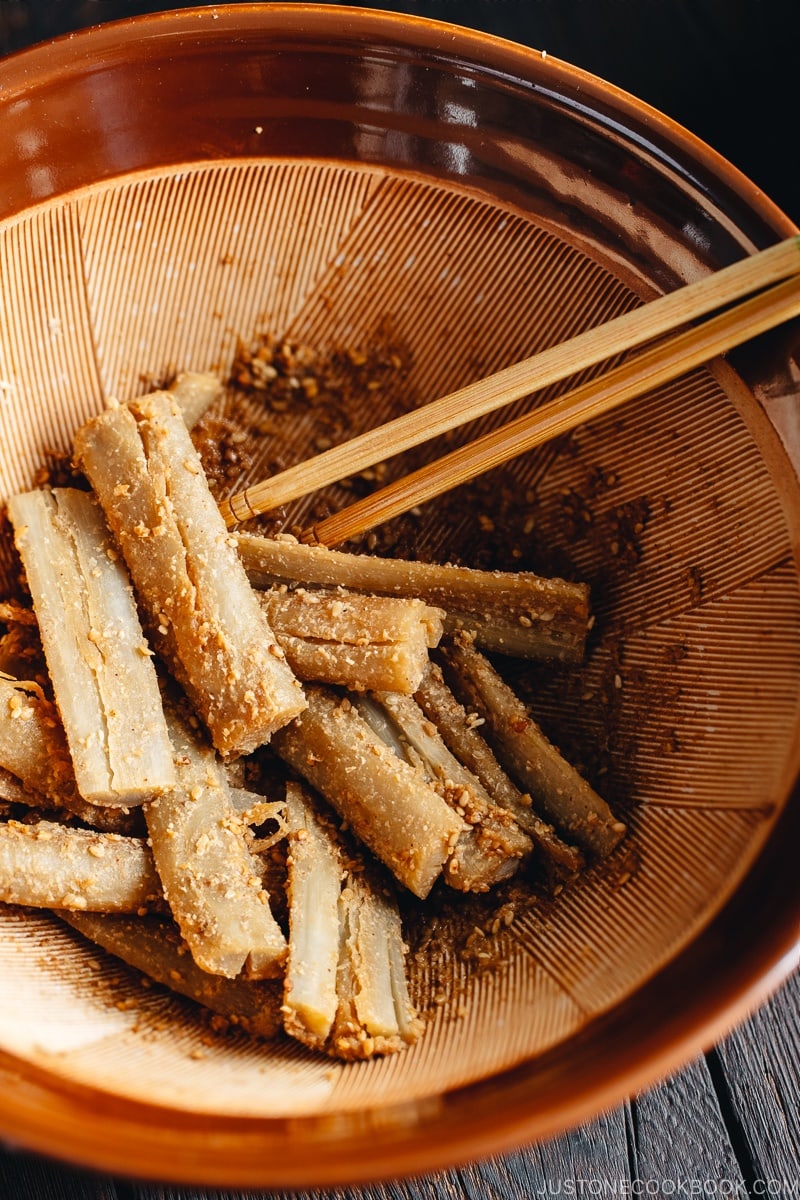
3 Tips to Make Pounded Burdock Root (Tataki Gobo)
1. Soak burdock root in vinegared water
Burdock root’s white flesh can oxidize after it is peeled. To prevent it from turning brown and to remove any astringent taste, we typically submerge the root in water with a little bit of vinegar. The burdock flesh turns pale in color, and since red and white are the colors of celebration in Japanese culture, it is recommended to use vinegared water.
2. Toast the sesame seeds before using
Even though the package of your sesame seeds says “Toasted” or “Roasted” sesame seeds, I still recommend toasting the sesame seeds in an empty frying pan until fragrant. The additional toasting releases the oil and brings out the nutty flavor even more.
3. Dress the burdock root while it’s hot
When the burdock root is still hot, quickly dress it with the sesame sauce. It will absorb more flavors than when it’s cooled. I’m not sure if it’s old wives’ tale that has passed down to generations, but I think there is some science behind this (or I would like to think that way).
Other Burdock Root (Gobo) Dishes
- Chikuzenni (Nishime) – root vegetables including gobo are simmered along with the chicken.
- Kinpira Gobo – julienned carrot and gobo are stir-fried and seasoned.
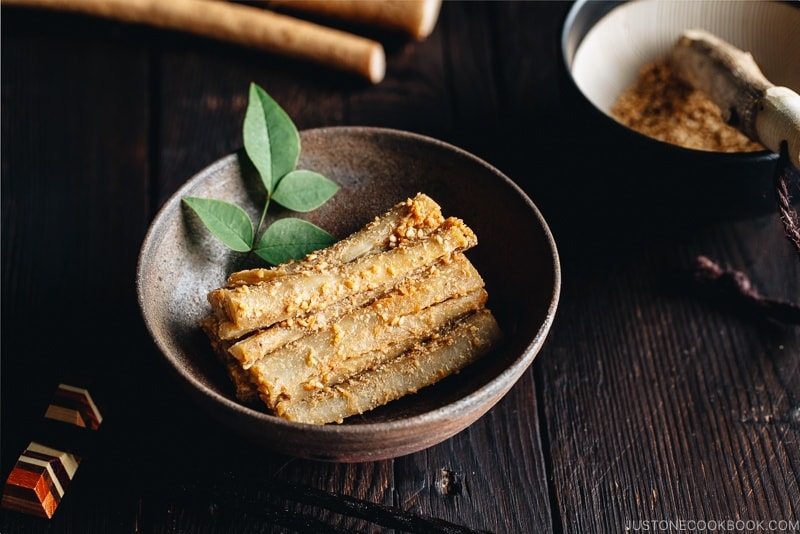
Wish to learn more about Japanese cooking? Sign up for our free newsletter to receive cooking tips & recipe updates! And stay in touch with me on Facebook, Pinterest, YouTube, and Instagram.
Pounded Burdock Root with Sesame Sauce (Tataki Gobo)
Ingredients
- 1 gobo (burdock root) (150 g, 5.3 oz)
- 4 cups water (for soaking the gobo)
- 1 tsp rice vinegar (unseasoned) (for soaking the gobo)
For the Sesame Sauce
- 2 Tbsp toasted white sesame seeds
- 1 Tbsp soy sauce
- 1 Tbsp mirin
- 1 tsp rice vinegar (unseasoned)
Instructions
Before You Start…
- If you will include this dish in your Osechi meal, I recommend preparing it 2–3 days before you plan to serve. For more helpful tips on planning your Japanese New Year feast, please read my A 5-Day Osechi Cooking Timeline blog post.
- Gather all the ingredients.
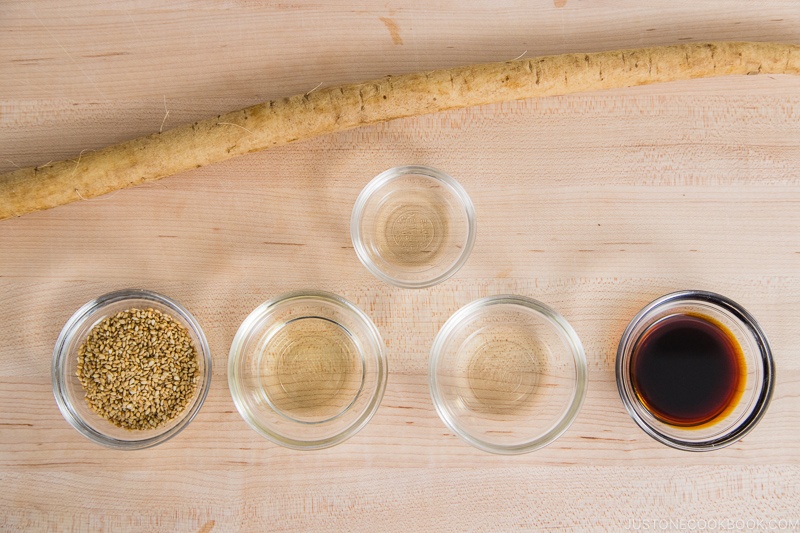
To Prepare the Sesame Sauce
- To a dry frying pan (no oil) over medium heat, add 2 Tbsp toasted white sesame seeds and toast them. Keep some distance from the heat while you shake the pan until the sesame seeds are fragrant and start to pop.
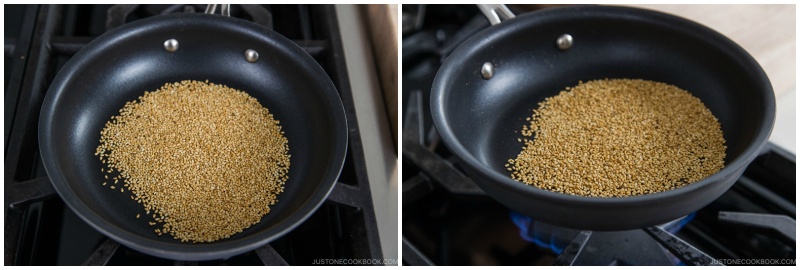
- Transfer the toasted seeds to a mortar (suribachi). Using a pestle (surikogi), grind the sesame seeds until 80% of the seeds are ground. Keep some of the seeds unground for texture.
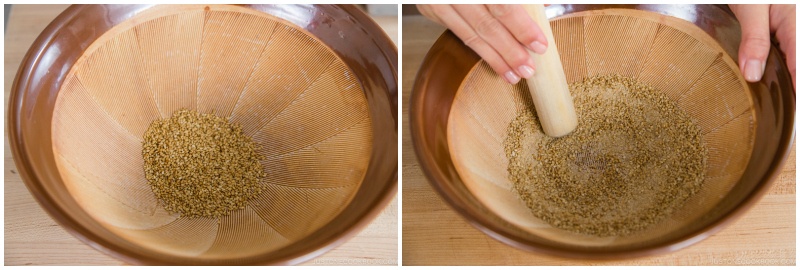
- To the mortar, add 1 Tbsp soy sauce, 1 Tbsp mirin, and 1 tsp rice vinegar (unseasoned). Mix well with the sesame seeds.

To Prepare the Gobo
- Scrape the skin of 1 gobo (burdock root) with the back of a knife. Don’t use a vegetable peeler on the gobo’s skin because you don't want to peel off the earthy and delicious flavor just below the skin.
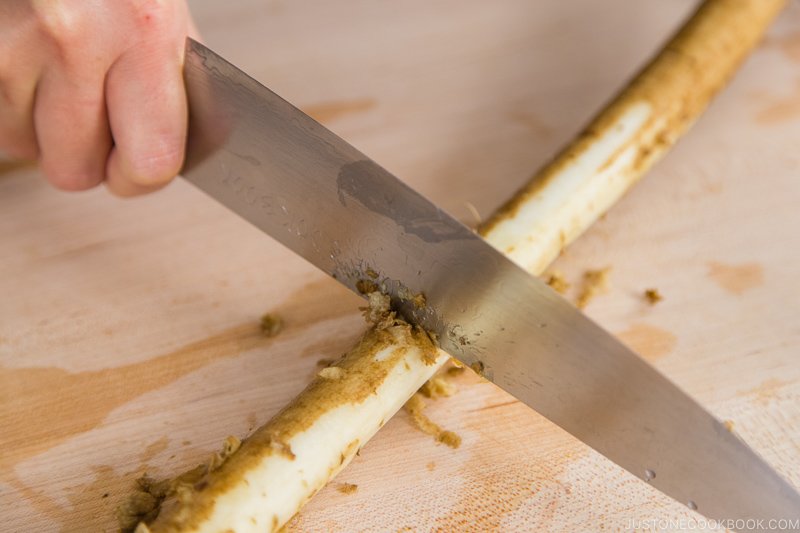
- Cut the gobo into 5-inch (12-cm) lengths, and then cut each piece in half lengthwise. If it’s a very thick piece, you can cut that piece lengthwise in half again.
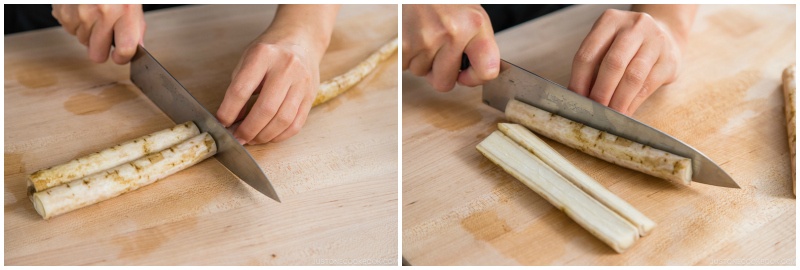
- Combine 1 tsp rice vinegar (unseasoned) and 4 cups water in a medium bowl and soak the gobo for 3 minutes to prevent it from changing color. Drain and set aside.

To Cook the Gobo
- Add the gobo to a saucepan filled with water. Bring it to a boil. Once boiling, lower the heat to medium and cook for 13–15 minutes, or until the gobo is tender but firm. Drain the gobo and transfer to a cutting board.
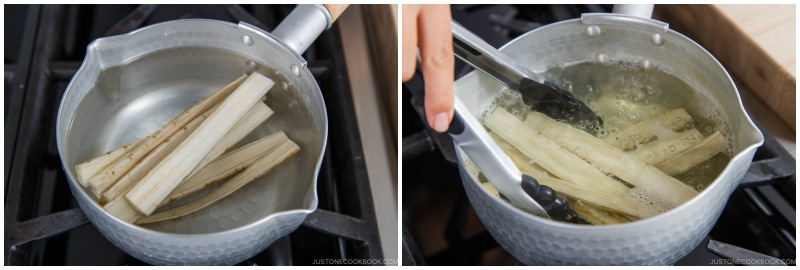
To Dress with the Sauce
- Pound the hot gobo with the pestle (surikogi) or a rolling pin from end to end until the fibers are smashed. This allows the sauce to permeate the fibers of the gobo. Then, cut the gobo in half crosswise (2.5-inch, 6-cm pieces).
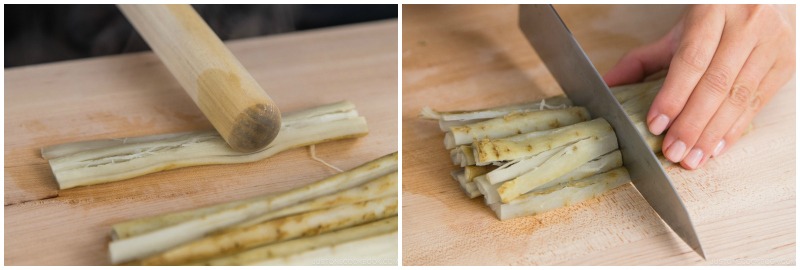
- While the gobo is still hot, transfer it into the sesame sauce and coat well. Gobo will absorb more flavors when it‘s hot.
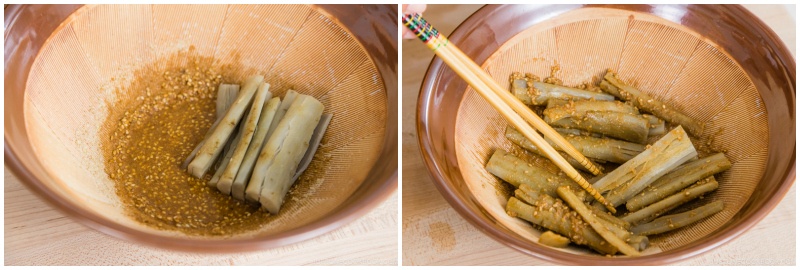
To Serve and Store
- Serve immediately at room temperature or serve chilled.

To Store
- You can keep the leftovers in an airtight container and keep them for 3 days in the refrigerator or for up to a month in the freezer.
Nutrition
Did you make this recipe?
Tag @justonecookbook on Instagram so we can see your delicious creation!


